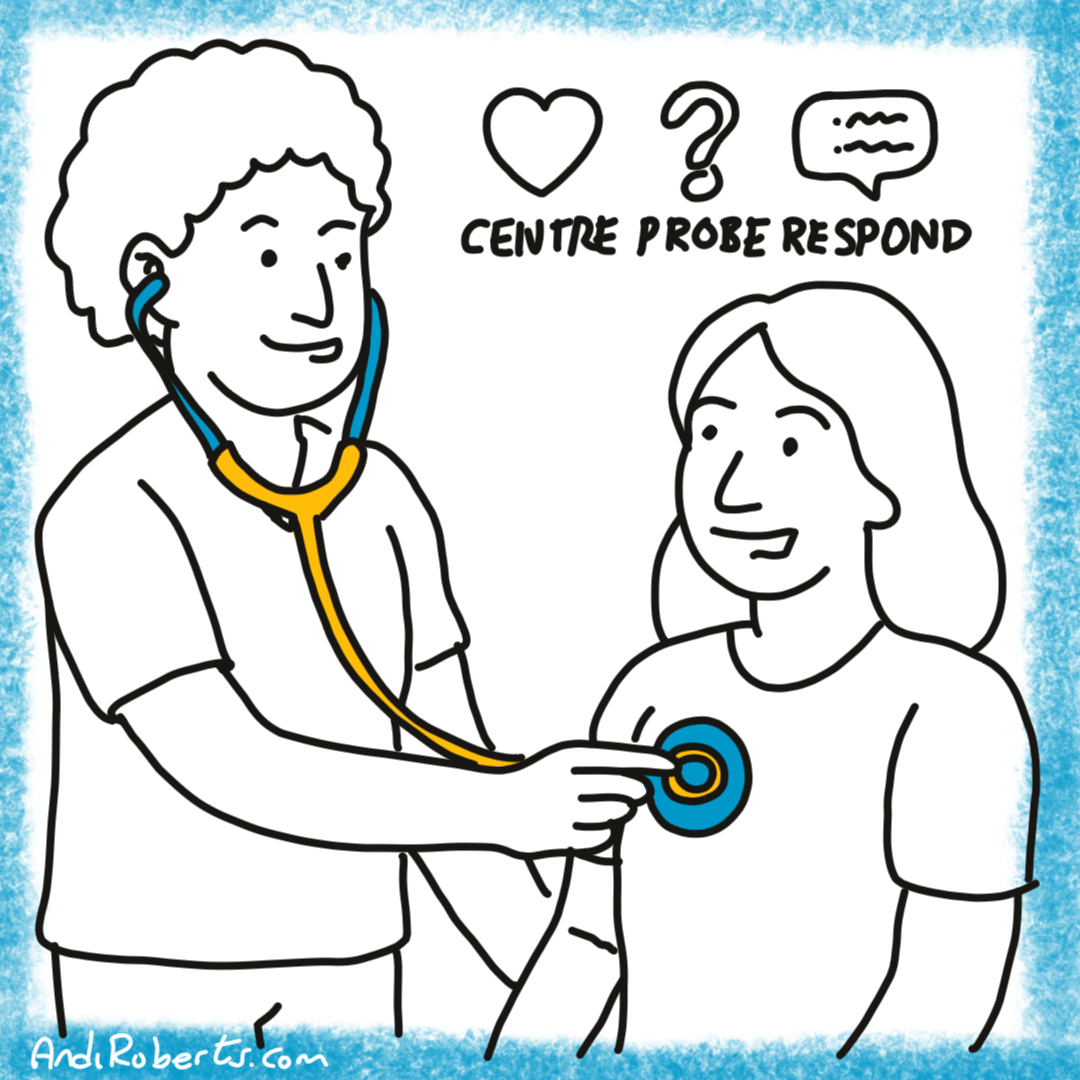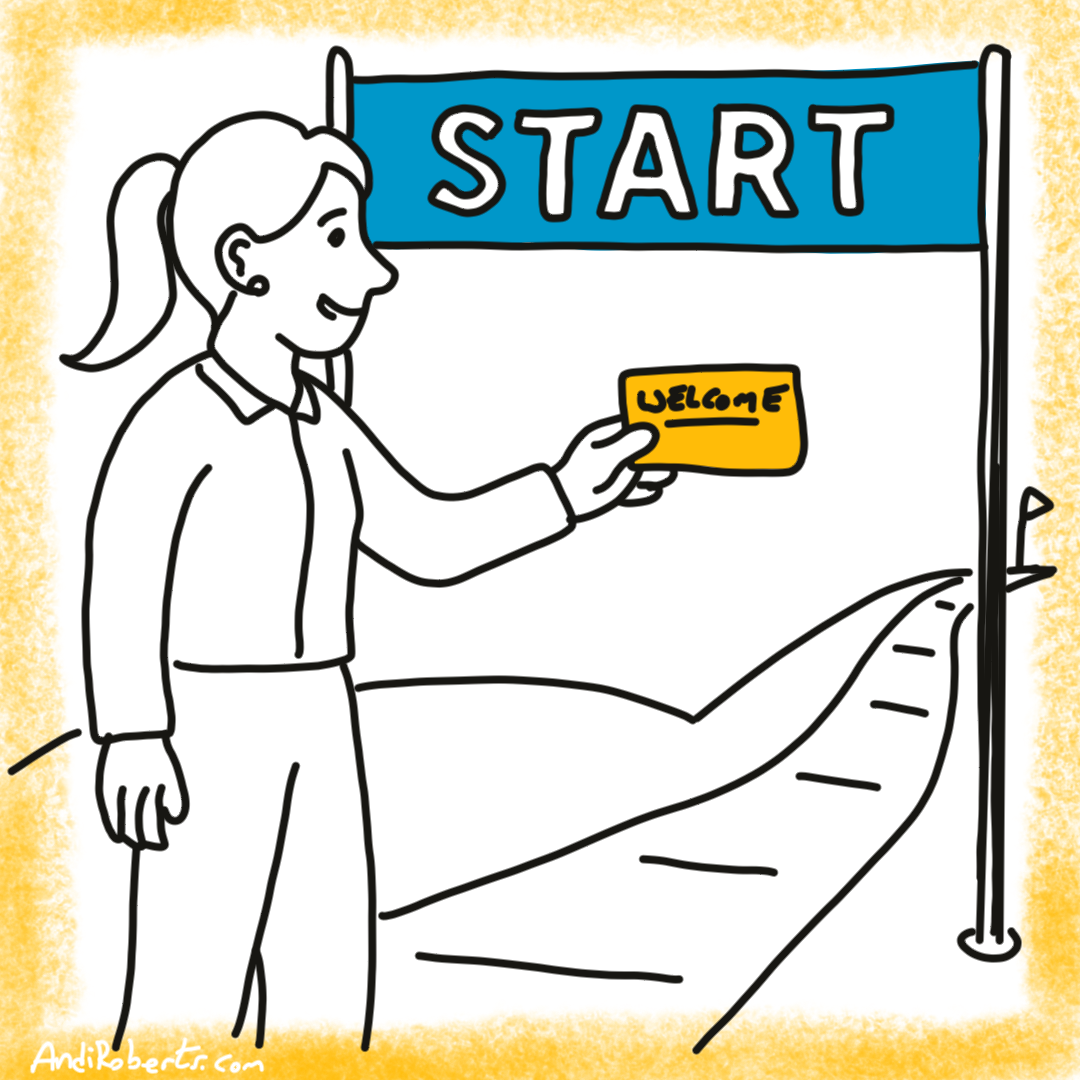Most teams struggle not because they lack talent, but because they lack clarity. Workloads balloon, meetings drag on, and communication expectations stay unspoken. Resentment builds quietly when some people feel interrupted, others feel overburdened, and still others feel excluded. These tensions rarely emerge as open conversations. Instead, they surface in stress, disengagement, or fractured trust.
Boundaries are often thought of as personal, but teams need them just as much. Boundaries mark what is acceptable, what is flexible, and what is negotiable. They provide the structure within which collaboration can flourish. Without them, teamwork easily slips into either chaos (everyone doing whatever they like) or rigidity (rules imposed without consent).
One practical way to surface these agreements is through mind mapping. Popularised by Tony Buzan in the 1970s as a visual thinking tool (Buzan, 1974), mind mapping helps groups capture complex ideas in a structured, memorable form. By placing the team at the centre of a map and branching out into key domains, members can see, literally, where limits and agreements lie. The use of colour and branches makes patterns clearer, encourages participation, and allows both technical and relational boundaries to be mapped side by side.
Boundary mapping for teams is therefore a process of making the invisible visible. It combines the clarity of mind mapping with the discipline of boundary-setting to create a shared picture of how the team wants to work together. Far from being restrictive, these maps create freedom. When everyone knows the limits and agreements, the team can focus its energy on the work itself rather than on managing misunderstandings.
Psychologist Henry Cloud and John Townsend (1992) describe boundaries as the recognition of where you end and another begins. Applied to teams, boundaries clarify where we stand together: our commitments, our limits, and our shared expectations. Research on psychological safety shows that clear agreements about how teams work improve trust, reduce conflict, and increase effectiveness (Edmondson, 1999).
Steps for team boundary mapping
1. Set the frame
Begin by naming the purpose: “We want to make our working boundaries visible so that we can support one another and avoid misunderstandings.” This ensures the process is not seen as complaining, but as co-creating better conditions for collaboration.
2. Identify key domains
Draw a mind map with the team name or purpose at the centre. From this centre, create branches for the domains where boundaries most often matter. Mind mapping (Buzan, 1974) works especially well here because it allows complex agreements to be captured at a glance, with colour and structure that make them memorable.
As a starting point, here are eight common domains where most team boundaries arise:
-
Time
-
Communication
-
Workload and Roles
-
Decision-making
-
Respect and Behaviour
-
Meetings
-
Availability and Responsiveness
-
Learning and Development
These domains are a suggestion, not a prescription. Some teams may find fewer are needed, while others may want to add additional branches such as Technology use, Stakeholder expectations, or Innovation. The key is to choose the domains that reflect your real context, the areas where hidden tensions and assumptions most often surface.
3. Create three strands for each domain
Under each domain branch, draw three sub-branches:
-
Non-negotiable (Red): Agreements that must always be honoured.
-
Flexible (Yellow): Boundaries that can shift with discussion.
-
Negotiable (Green): Areas open to case-by-case agreement.
Using colour coding not only makes the map visually engaging but also prevents the trap of treating every boundary as absolute or dismissing them as trivial. By clustering them visually, teams can immediately see where firm commitments lie and where there is space for adaptation.
4. Brainstorm examples together
Invite team members to suggest boundaries for each domain. Emphasise that boundaries are not complaints but conditions that help people do their best work.
At this stage, focus on breadth rather than precision. Encourage everyone to contribute, even if their ideas seem small or obvious. A useful method is to begin with sticky notes (physical or digital). Each participant writes one boundary per note and places it under the relevant domain. Once visible, the group can discuss and, if needed, shift boundaries between domains or categories (from negotiable to non-negotiable, for example).
These sticky notes then become the next layer of the mind map, branching out under each coloured strand. The visual clustering makes it easy to see overlaps, contradictions, and priorities. Negotiation is part of the process: some boundaries will move categories, others will be merged or reworded until the group is satisfied that the map represents real, workable agreements.
5. Consolidate and agree
Review the map together. Where there is consensus, mark boundaries as agreed. Where views differ, negotiate until there is at least clarity, if not perfect alignment. The goal is not perfection but a set of agreements the team can live with and test in practice.
6. Document the team contract
Translate the final mind map into a one-page “team agreement.” Keep it simple, visible, and practical. Revisit it quarterly or whenever conditions change.
Team examples
To make the process concrete, here are sample boundaries a team might generate across the eight domains:
Time
-
Non-negotiable: “No recurring meetings after 5 p.m.”
-
Flexible: “Overtime allowed if agreed by all.”
-
Negotiable: “Start times may vary between 8–10 a.m.”
Communication
-
Non-negotiable: “No negative feedback via email.”
-
Flexible: “Slack messages after hours are fine but not urgent.”
-
Negotiable: “Camera use in virtual meetings is optional.”
Workload and Roles
-
Non-negotiable: “No assigning tasks without discussion.”
-
Flexible: “Workload balancing will be reviewed weekly.”
-
Negotiable: “Covering for colleagues during leave is voluntary.”
Decision-making
-
Non-negotiable: “Product lead signs off final decisions.”
-
Flexible: “Consensus is sought where time allows.”
-
Negotiable: “Operational choices can be delegated.”
Respect and Behaviour
-
Non-negotiable: “No interruptions during presentations.”
-
Flexible: “Humour is welcome if inclusive.”
-
Negotiable: “Celebrations may be informal or formal.”
Meetings
-
Non-negotiable: “All meetings require a clear agenda.”
-
Flexible: “Weekly meetings may shift to bi-weekly.”
-
Negotiable: “Stand-ups may vary between 10–15 minutes.”
Availability and Responsiveness
-
Non-negotiable: “No expectation of replies outside working hours.”
-
Flexible: “Response times may tighten during launches.”
-
Negotiable: “Weekend cover rotates by volunteer.”
Learning and Development
-
Non-negotiable: “No blame in retrospectives.”
-
Flexible: “Feedback may be immediate or scheduled.”
-
Negotiable: “Training opportunities pursued if budget allows.”
Variations
-
Micro-mapping: Apply the method just to meetings. For example: red = start on time, yellow = agenda can shift, green = cameras optional.
-
Team charter: Expand the map into a broader charter that includes mission, values, and norms.
-
Pulse checks: Revisit the map quarterly and ask: Which boundaries are being honoured? Which need revising?
-
Hybrid adaptation: Add domains specific to remote work, such as technology use or time-zone overlap.
Boundaries with stakeholders
Teams often sit in the middle of a web of internal and external stakeholders such as senior leaders, clients, and partner organisations. Pressure from these groups can erode team agreements unless boundaries are made explicit. Mapping boundaries with stakeholders helps surface what is acceptable, flexible, and negotiable in those relationships. For example, a team might agree: Non-negotiable: no scope changes without timeline review; Flexible: additional data requests allowed if deadlines permit; Negotiable: attending stakeholder events on a rotating basis. By making these boundaries visible, the team prevents overreach, protects focus, and strengthens trust with stakeholders by setting realistic expectations.
Personal boundary maps for team members
Even within a strong collective agreement, individuals have their own limits and needs. Personal boundary mapping is a way for each team member to articulate what supports their best work. This might include boundaries around energy (for example, “I need no-meeting mornings twice a week”), communication (for example, “I prefer feedback live, not in email”), or relational dynamics (for example, “I value directness over hints”). Sharing these maps within the team helps colleagues understand each other as people, not just roles. It makes space for difference while strengthening connection, as members learn where to give flexibility and where to show extra care.
Why it matters
Boundary mapping is not about limiting creativity or adding bureaucracy. It is about creating clarity so that energy can be spent on collaboration rather than on managing hidden frustrations. Research shows that role clarity and psychological safety are key predictors of effective teams (Edmondson, 1999). By making boundaries visible, teams prevent drift, reduce conflict, and create conditions for trust to flourish.
Boundaries are not walls that divide a team. They are agreements that make connection possible. When a team says, “This is how we work together,” it is not closing down options, it is opening up trust. People can give more freely when they know their limits will be respected. They can say yes wholeheartedly because they trust their no will also be honoured.
Boundary mapping shifts a team from surviving on tolerance to thriving on trust. It is not about restriction but about freedom: the freedom to focus, to collaborate, and to bring your best work forward without the weight of unspoken frustration.
Reflective questions
-
Which of the eight domains feels most relevant for your team right now, and which is most often ignored?
-
How would your current team agreements look if you drew them as a mind map today?
-
In which domain do unspoken tensions create the most friction, and how might mapping them create relief?
-
What boundaries could your team make non-negotiable to protect energy and trust?
-
How might personal boundary maps strengthen your team’s appreciation of each member’s needs?
-
Which stakeholders most test your boundaries, and how could mapping them shift the relationship?
Do you have any tips or advice for crafting and embedding boundaries?
What has worked for you?
Do you have any recommended resources to explore?
Thanks for reading!
References
Buzan, T. (1974) Use Your Head. London: BBC Books.
Cloud, H. and Townsend, J. (1992) Boundaries: When to Say Yes, How to Say No to Take Control of Your Life. Grand Rapids: Zondervan.
Edmondson, A. (1999) ‘Psychological safety and learning behavior in work teams’, Administrative Science Quarterly, 44(2), pp. 350–383.





Leave A Comment